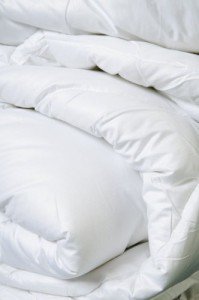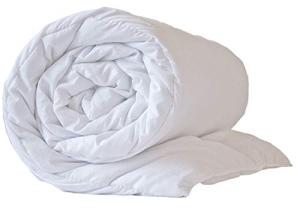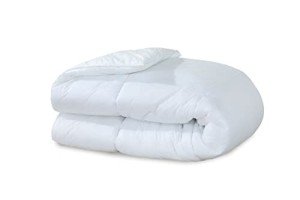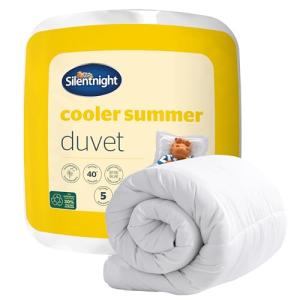When it comes to enhancing your sleep experience, few factors are as crucial as your bedding. Among these, duvets play a vital role in providing comfort, warmth, and a sense of coziness. For individuals with allergies or sensitivities, selecting the right duvet can be a bit more complicated. Enter the cozy non-allergenic duvet rated at 4.5 tog for double beds—an ideal solution for those seeking comfort and health benefits. This guide explores the features, benefits, materials, care tips, and frequently asked questions about non-allergenic duvets.
What is Tog Rating?
Before diving into the specifics of a 4.5 tog duvet, it is essential to understand what tog ratings mean. The tog rating measures the thermal insulation of the duvet, providing a guideline on the warmth it can offer:
- 1.0 to 4.5 Tog: Light, suitable for summer or warmer climates.
- 4.5 to 9.0 Tog: Medium weight, ideal for spring or fall.
- 9.0 Tog or higher: Heavyweight, designed for winter use.
A duvet rated 4.5 tog falls within the medium category, making it an excellent all-year-round option that can keep you comfortably warm without overheating.
Benefits of Non-Allergenic Duvets
Choosing a non-allergenic duvet can be particularly beneficial for individuals that suffer from allergies or asthma. Here are some advantages worth considering:
1. Healthier Sleep Environment
Non-allergenic duvets are designed to minimize the risk of triggering allergy symptoms. They are resistant to dust mites, mold, and other allergens that may accumulate in conventional bedding.
2. Enhanced Comfort
Made with soft and breathable materials, non-allergenic duvets provide a cozy layer that enhances overall sleep quality. This added comfort can lead to more restful nights and refreshed mornings.
3. Easy Maintenance
Most non-allergenic duvets are machine washable, making it easy to maintain a hygienic sleeping environment. Regular washing can keep your bedding fresh and free from allergens.
4. Versatility
With a tog rating of 4.5, this duvet is suitable for various climates. It works well as a standalone duvet or can be combined with a heavier duvet in colder months for extra warmth.
5. Eco-Friendly Options
Many non-allergenic duvets are made with sustainable materials, making them an environmentally friendly choice for consumers conscious of their ecological footprint.
Materials Used in Non-Allergenic Duvets
Understanding the materials used in non-allergenic duvets can help consumers make informed choices. Here are some common materials:
| Material | Features |
|---|---|
| Microfiber | Soft, lightweight, and breathable. Repels dust mites effectively. |
| Polyester | Non-allergenic and hypoallergenic, offering durability and ease of care. |
| Bamboo | Naturally resistant to dust mites and mold; also breathable and moisture-wicking. |
| Cotton | Organic cotton options are non-toxic and are a popular choice for sensitive skin. |
| Wool | Naturally hypoallergenic and regulates temperature well, but can be heavier. |
Tips for Choosing the Right Non-Allergenic Duvet
When selecting a cozy non-allergenic duvet, consider the following:
- Fill Type: Choose a fill material that suits your comfort preferences and allergy sensitivities.
- Cover Fabric: Opt for breathable and soft fabric to enhance comfort.
- Care Instructions: Verify if the duvet is machine-washable for easy maintenance.
- Certifications: Look for certifications like OEKO-TEX or allergy-friendly seals to ensure quality.
Care Instructions for Non-Allergenic Duvets
To maintain the quality and longevity of your non-allergenic duvet, follow these care tips:
- Regular Washing: Wash according to the manufacturer's instructions, typically every 1-3 months.
- Drying: Tumble dry on a low heat setting to avoid damaging materials.
- Air it Out: Let your duvet breathe by airing it out on a sunny day to eliminate moisture and odors.
- Storage: Keep in a cool, dry place when not in use, opting for a breathable storage bag to prevent moisture buildup.
FAQs about Cozy Non-Allergenic Duvets
1. Are non-allergenic duvets completely allergy-proof?
While non-allergenic duvets significantly reduce allergen exposure, they may not be entirely allergy-proof. However, they are specifically designed to minimize allergens such as dust mites and mold.
2. What is the best tog rating for year-round use?
A tog rating of 4.5 is considered suitable for year-round use, striking a balance between warmth and breathability for most climates.
3. Can I use a non-allergenic duvet if I have sensitive skin?
Yes, many non-allergenic duvets use hypoallergenic materials that are gentle on sensitive skin. Always check for certifications indicating the materials are free from harsh chemicals.
4. Do non-allergenic duvets come in different sizes?
Yes, non-allergenic duvets are available in various sizes to fit different bed types, including single, double, queen, and king.
5. How often should I change my duvet?
It is advisable to replace duvets every 5-10 years, depending on usage and care. Regular maintenance will prolong the duvet's lifespan.
Investing in a cozy non-allergenic duvet with a tog rating of 4.5 for your double bed can significantly enhance your sleep environment. With their health benefits, comfort features, and easy maintenance, these duvets offer a smart solution for allergy sufferers and anyone seeking quality sleep. By understanding your options and following the care instructions, you can ensure that your investment provides warmth and comfort for years to come. Whether you're upgrading your bedding or seeking a solution for allergies, a non-allergenic duvet is a worthy addition to your home.






